A new game for Atari 2600: L.E.M. Lunar Excursion Module
 This is a new game for Atari 2600 console. This game was written by Philsan a user of Atariage forum.
This is a new game for Atari 2600 console. This game was written by Philsan a user of Atariage forum.
source: atariage forum
 This is a new game for Atari 2600 console. This game was written by Philsan a user of Atariage forum.
This is a new game for Atari 2600 console. This game was written by Philsan a user of Atariage forum.
source: atariage forum
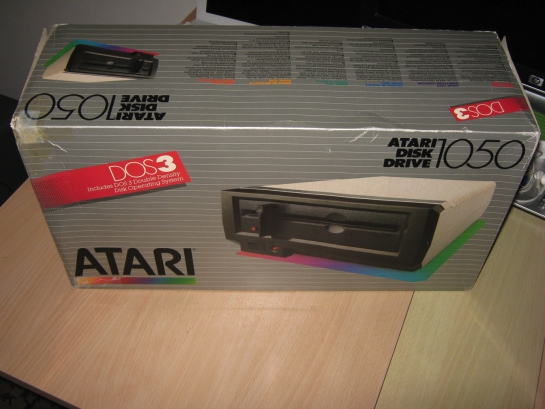
Autopsy:
from atarimuseum Homepage:
The Atari 1050 disk drive was Atari’s replacement to the Atari 810 disk drive. The new Atari 1050 disk drive matched the new high-tech, low profile line of Atari XL home computer systems. The original Atari 810 could hold single density data (88K out of 100K diskettes) which was standard.
The new Atari 1050 disk drives were DUAL-DENSITY disk drives and could use the older Atari 810 diskettes, but could also hold data in a new Enhanced Density mode of 127K. Although the standard for disk drives was 180K, this additional storage was welcomed by Atari users who bought the disk drives. The only downside to the disk drives were their new version of Atari DOS: 3.0 which had compatibility problems with its earlier version: 2.0s Atari would later fix this problem with a very well designed and accepted and one of the most popular Atari versions of DOS: 2.5. Up to 4 Atari disk drives could be “daisy-chained” together.
Using Atari’s unique SIO bus (Serial I/O), each drive would connect to the next, forming a chain in which data was transferred. Although slower then other I/O buses used on other computers, Atari’s SIO bus was a simple and convenient way for the non-computer literate to more easily add components onto their Atari computer systems (other brands of computers required internal cards, ribbon cables, complicated jumper block settings which were geared more towards the computer hobbyist crowd instead of the common individual with little computer knowledge).
The disk drive electronics and its mechanism were done by Tandon, the case design was done by Tom Palecki, formerly of Atari’s Industrial Design group. Tom was also responsible for the design of the Atari 1055 3.5″ disk drive which was never released by Atari, Inc. due to its sales in 1984.
source: atarimuseum.com
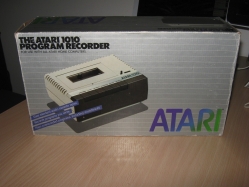
Autopsy:
from atarimuseum Homepage:
The Atari 1010 Program Recorder was the replacement to the Atari 400/800 lines Atari 410 Program recorder. The new 1010 was stylish and simplistic to use. Although no faster then any other standard tape recorder/Program Recorder, the Atari 1010 was a reliable little unit and was very popular in European markets where money was tight and the majority of software was available on Tape Cassettes.
What made the Atari Data/Program recorders unique from all other cassette decks used on other home computers was its ability to tie into the Atari Audio Summation Circuitry. The Atari 410, 1010 and the Atari XC11 & XC12 Data/Program recorders all worked through the Atari SIO (Serial I/O) bus, a data communications bus very similar to today’s USB (Universal Serial Bus). The Data/Program recorders could all be controlled by the Atari computer and also channeled their audio into the SIO bus and into the Atari computer where it would be heard through a connected Television or Computer Monitor.
The Data/Program recorders also were Dual Track systems and could load data while also playing audio/music tracks simultaneously. This meant that while another section of a program was loading, the recorder could give the user instructions, information or play a soundtrack to occupy the users time while the program loaded. This system was used extensively in Atari’s unique and unparalleled line of educational software.
source: atarimuseum.com
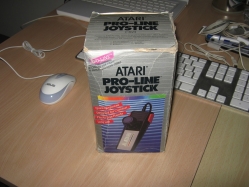
Autopsy:
Standard 7800 joysticks, compatible with the 2600 and 8 Bit Computer series. Marketed as advanced controllers, featuring independently functioning buttons (7800 only). Long, narrow design.
source: atariage.com
The functions keys (Start / Option / Select / Reset..) of my Atari 130 XE not making good contact, i have fixed this problem with a good clean-up and graphite of a pencil.
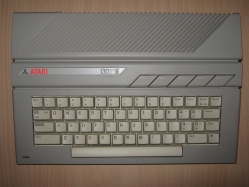
Autopsy:
from old-computers Homepage:
The Atari 130-XE was first shown at the Winter Las Vegas Consumer Electronic Show in 1985 (with the Atari 130 ST), it has the same characteristics as the Atari 800 XL except its added memory (128 KB instead of 64 KB for the 800 XL).
The extended memory can be used as a RAM disk, or can be accessed by bank switching routines. It was an attempt to extend the life of the old XL series, but Atari abandoned it pretty quickly to concentrate on promoting the ST series, which uses the same case style.
source: old-computers.com
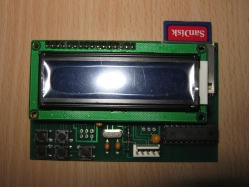
Autopsy:
Testing the SIO2SD interface for Atari
The SIO2SD is a device that allows you to load games/applications into any 8-bit Atari XL/XE computers via SIO interface from SD/MMC cards.
Device abilities:
SIO2SD in Action:
source: sio2sd.gucio.pl marcinprusisz.pl
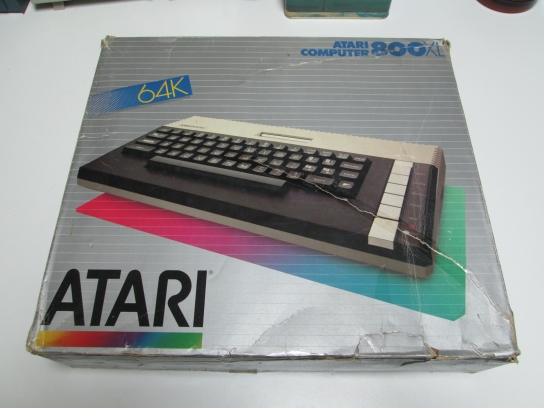
Autopsy:
The Atari 800XL was the third version of the Atari 8-bit line of computers introduced in 1983. The system contained a full 64K of memory, had all the standard VLSI chips (Antic, GTIA, Pokey, PIA) and was in a smaller and more compact design. The keyboard was good, not as good as the 1200XL keyboard, but it had a solid feel to it.
The cartridge port had been move to the top center of the system and used special metal spring loaded doors to allow the insertion and removal of ROM cartridges. This system of spring loaded doors also kept dirt and objects from falling into the cartridge slot when it was not occupied.
Overall the system is basically a cost reduced Atari 800 with a fuzzier picture. The system came with built-in diagnostics and a HELP key. The OS was still slightly incompatible with many original Atari 400/800 software titles, but Atari began to distribute a “Translator” disk which would load up a 400/800 compatible OS into memory so that the 800XL could support those programs.
A never version of the 800XL was being readied called the 800XL-F which included the new “FREDDY” memory management chip that would have allowed for more use of free memory for programs and geater use of graphics by the “ANTIC” video processor.
from: atarimuseum.com
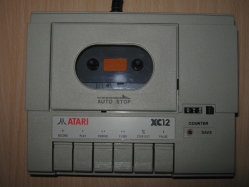
Autopsy:
from Wikipedia:
This is a Atari XC12 tape drive (small model like the 1010, sold worldwide). Similar models were released, mainly in Eastern Europe. These included:
source: wikipedia
My Atari 65 XE can show only Black & White pictures, i have found the problem when i have open it, someone has put a screw in the wrong place and the trimmer which adjust the color is broken.
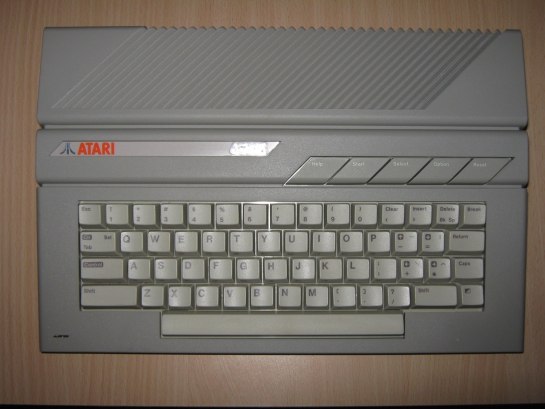
Autopsy:
from Wikipedia:
Jack Tramiel’s Atari Corporation produced the final machines in the 8-bit series, which were the 65XE and 130XE (XE stood for XL-Expanded). They were announced in 1985, at the same time as the initial models in the Atari ST series, and resembled the Atari ST. Originally intended to be called the 900XLF, the 65XE was functionally equivalent to the 800XL minus the PBI connection.
The 65XE (European version) and the 130XE had the Enhanced Cartridge Interface (ECI), a semi-compatible variant of the Parallel Bus Interface (PBI). The 130XE shipped with 128 KB of memory, accessible through bank-selection.
An additional 800XE was available in Europe (mostly Eastern Europe), which was essentially a 65XE repackaged in order to ride on the popularity of the original 800XL in Europe. Unfortunately, the 65XE and 800XE machines sold in Eastern Europe had a buggy GTIA chip, specifically those machines made in China in 1991.
Finally, with the resurgence of the gaming industry brought on by Nintendo, Atari Corp. brought out the XE Game System (XEGS), released in 1987. The XE Game System was sold bundled with a detachable keyboard, a joystick and a light gun (XG-1), and a couple of game cartridges (Bug Hunt and Flight Simulator II). The XE Game System was essentially a repackaged 65XE, and was compatible with almost all Atari 8-bit software and hardware as a result. Bad marketing and a lack of newer releases hampered sales.
On January 1, 1992, Atari corp. officially dropped all remaining support of the 8-bit line.
source: wikipedia
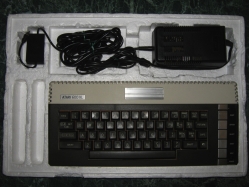
Autopsy:
from old-computers Homepage:
The Atari 800XL, together with the 600XL, were successors of the Atari 400/800 series and the unsuccessful Atari 1200 XL in a more compact case. They could use almost the same software, just so long as the program was written correctly, because of some slight differences between OS versions.
The 800XL had 64 KB of RAM, two joystick ports and kept all the custom chips (Pokey, GTIA, Antic) of the previous models. It also featured the new Parallel Bus Interface (PBI) providing high speed access to the system bus. The new version of the graphic Antic chip offered 16 graphics modes instead of 12 for the 800.
An enhanced version, called 800XLF, appeared in summer 1984. It was equipped with the new “Freddie” chip which allowed faster memory management, especially for graphics display. This version was released in Europe with SECAM video interface.
Alongside the Commodore 64 and the Apple II, the 600 and 800XL were among the most popular home computers.They would be replaced in 1985 with the XE series when Atari launched the ST.
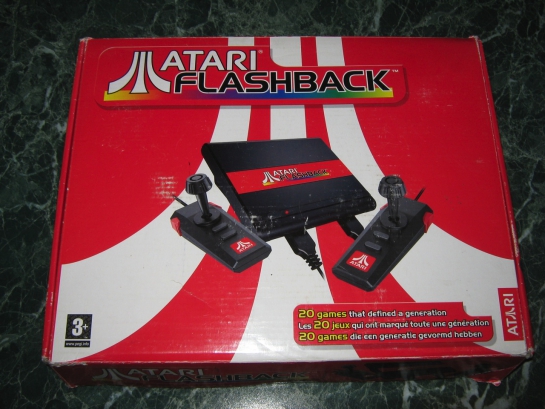
Autopsy:
from Wikipedia:
The Atari Flashback was released in 2004. The console resembled an Atari 7800 in appearance, and came with a pair of controllers which resembled those of the Atari 7800 but were slightly smaller.
The system had twenty games built-in, all originally developed by Warner Communication’s Atari Inc. and Atari Corp. for the 2600 and 7800 game systems. The games which originally required analog paddle controllers were made to work with the included joysticks. It was designed by Atari veteran Curt Vendel, whose company Legacy Engineering Group designs other home video game and video arcade products.
Atari Inc. gave Legacy Engineering ten weeks to design the product, produce its games, and ready it for the 2004 Winter holiday season. The Atari Flashback was based on “NES-on-a-chip” hardware, not resembling either of the Atari systems which the Flashback was supposed to represent. As a result, the games it contained were ports and differed in varying degrees from the original games, and therefore the Flashback was unpopular with some purists.
source: wikipedia
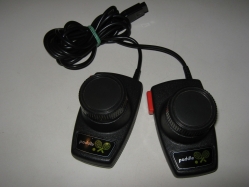
from Wikipedia:
A paddle is a game controller with a round wheel and one or more fire buttons, where the wheel is typically used to control movement of the player object along one axis of the video screen. A paddle controller rotates through a fixed arc (usually about 330 degrees); it has a stop at each end.
The paddle wheel is usually mechanically coupled to a potentiometer, so as to generate an output voltage level varying with the wheel’s angle relative to a fixed reference position. A paddle is thus an absolute position controller. That is, without any previous knowledge, the sensor can be read and the result directly indicates the position of the paddle knob. This is in contrast to a quadrature encoder-based device or “spinner”.
source: wikipedia
Recent Comments